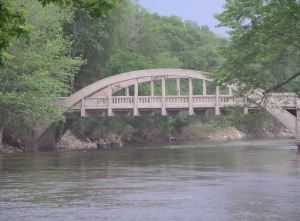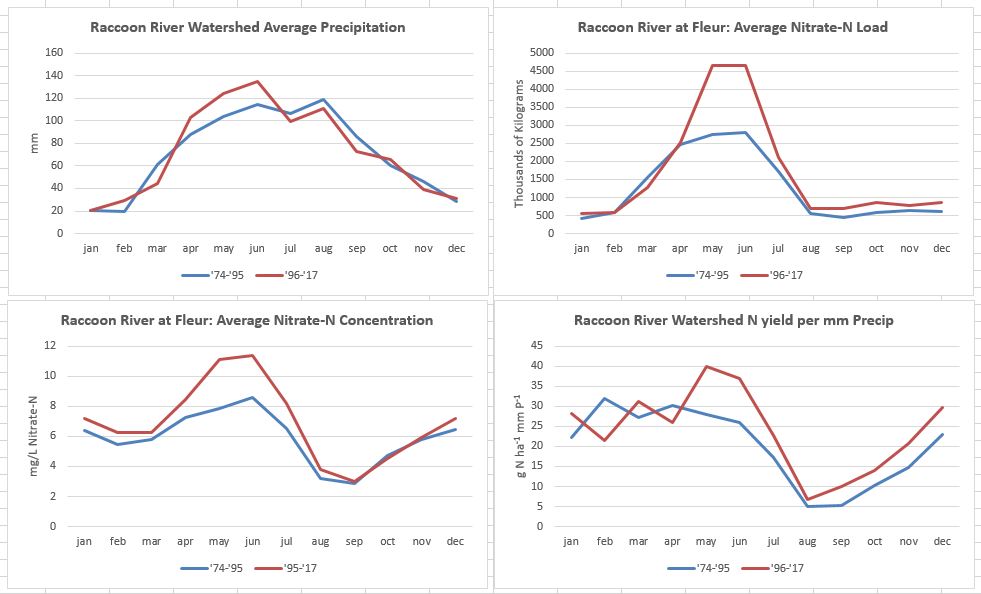
I have 44 years of rock solid Raccoon River nitrate data measured at Fleur Drive in Des Moines, courtesy of Des Moines Water Works. In looking at historical water quality data, it is interesting and fun to divide your record into pieces. 44/2 = 22, so let’s do that.
I’m looking at monthly averages of 4 things here.
- Precipitation, which is an average of sites at Des Moines, Guthrie Center, Rockwell City, and Storm Lake, each roughly situated in a corner of the Raccoon watershed.
- Nitrate-nitrogen concentration, measured in mg/L which is the same as parts per million.
- Nitrate-nitrogen load, measured in 1000s of kilograms (1000 kg is a metric ton, equal to about 2200 lbs).
- Finally, yield of nitrogen (load per unit area, in this case kilograms per hectare-kg/ha, which isn’t too far away from lbs/acre) per mm of precipitation. In other words, how much nitrate is delivered to streams from each hectare of land by each mm of rain that land receives.
Comparing 1974-1995 (22 years) to 1996-2017 (22 years), this is how much each changed:
- Precipitation: +2.6%
- NO3-N concentration: +11%
- NO3-N load: +34%
- Yield/mm precipitation: +30%.
Obviously increases in delivery of nitrate to streams have been far larger than precipitation increases. 74% of the load increase has occurred in two months: May and June. That’s a real head-slapper.
If global warming means wetter weather for Iowa, which a lot of people are saying will be the case, we can see here that modest increases in precipitation will likely produce disproportionately larger increases in nitrate loading. This data is shown in the graphs below.
The featured image is the Marsh Bridge over the North Raccoon River at Lake City, known as the “Coon Bridge” back in the day. James Barney Marsh was a Wisconsin native educated as an engineer at Iowa State College. The Marsh design was patented and repeated in several bridges across the Midwest, especially in Iowa and Kansas. Another Marsh bridge spans the Des Moines River at Court Avenue in the capitol city. The Coon Bridge was constructed in 1914 and replaced in 1985, but still resides in a nearby county park.

Raccoon River nitrate and watershed precipitation, 1974-1995 versus 1996-2017.